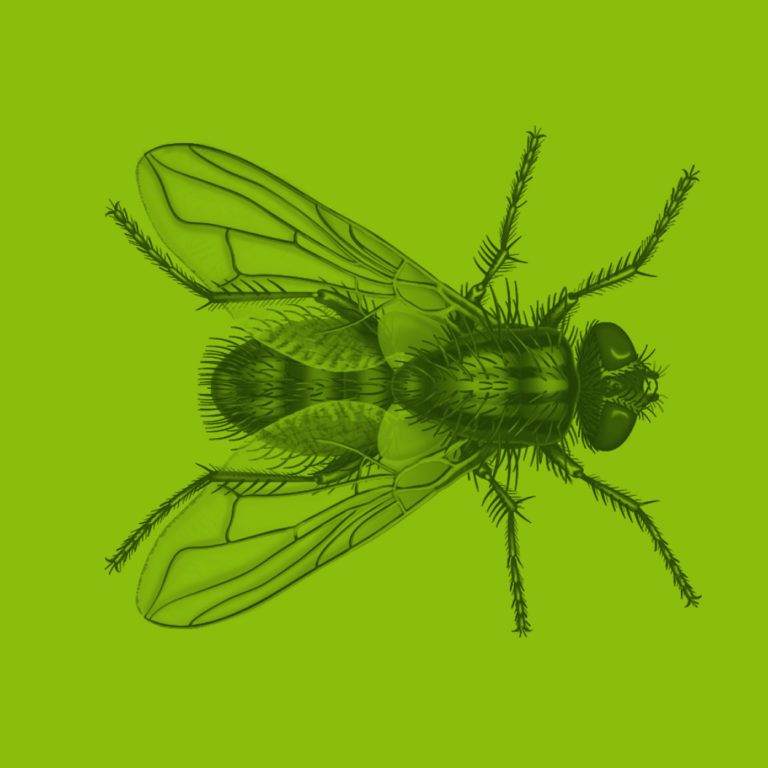Housefly
(Musca domestica)
The housefly is 6 to 7 mm long and grey colored. The breast has four longitudinal stripes, the abdomen is yellowish at the bottom. Its larva is white or yellow and 7 to 12 mm long.

Prevention tips
- Eliminate the breeding grounds of the larvae
- Dispose of kitchen waste and garbage quickly and reliably
- Avoid food contamination and odour development
- Fly screens can prevent the animals from entering
Diet
The flies absorb various liquids. However, they can also dissolve solid water-soluble substances with their saliva and then suck them up.
The larvae feed on organic material in the decomposition process and are therefore found e.g. in garbage, compost, on excrement, but also on food.
Life
Flies like to stay in houses, but they also occur in nature, especially on animal carcasses and animal faeces. They can also be found where pets live (e.g. in the vicinity of stables, piles of mist) or store waste (e.g. garbage containers, landfills).
Houseflies can indirectly transmit diseases and carry microorganisms.
They are therefore particularly problematic in the area of hygiene and food. Their feces pollute surfaces, the larvae can cause disgust.
Benefits
At the same time, house flies are also part of food webs and therefore an important food source for birds, reptiles, amphibians, other insects and spiders.
They degrade organic material and thus return it to the ecological cycle, which contributes to soil fertility.
Houseflies are also specifically bred for research purposes and have a great importance as a source of protein in animal feed.